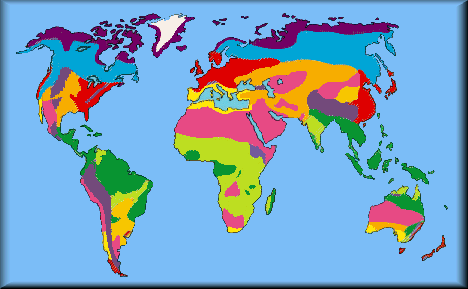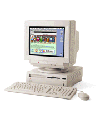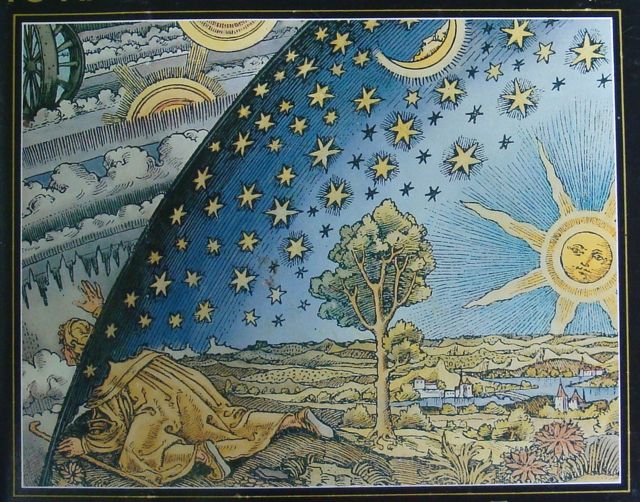 Reasoning
ReasoningNavigating the site:
Methods
![]()
![]()
![]()
![]()
![]()
![]()
Method is a way to do something, yet methods are very difficult conceptual steps in a process to understand and then to apply.
It forms the root word of methodology which means the study of how certainty is established with respect to what people know. A logical process to create verifiable types of information.
Methods involve a process of knowing and the application of logic to proof.
Methodology refers to the systematic application of rational procedures to elucidate the rules governing the uses of evidence, arguments and hypotheses in the substantiation of real versus imagined events; including people, behavior, places and things. An expected outcome of a methodology is to dispel uncertainty.
Exercise | Ten steps in a methodology | 1 | 2 | 3 | 4 | 5 | 6 | 7 | 8 | 9 | 10 | inductive | deductive
See a diagram of how methods may be viewed as a verification process or a decision making cycle.
Variant meanings:
- the means or manner by which we verify events, actions, motives and outcomes.
- a way to authenticate facts as opposed to notions,
- or the manner of establishing actual occurrences as opposed to alleged actions or behaviors that we believe may have occurred.
- the technique and procedures used by which statements are proven to be:
a. true
b. false
c. unproven, or not provable
What are the differences among truth, belief, and knowledge?
The application of logic to proof as a means of determining or establishing certainty.
Here we consider ten steps between not knowing something and knowing with tentative certainty.
Method here is the use of reason to evaluate alleged circumstancesdeductive reasoning -- the logical or formal analysis of information based on a few basic rules and the technique of moving from the general rule to its application in a specific instance, or case.
Periodic table of the elements was deductive achievement.
inductive reasoning -- the logical or formal analysis of cases where the data from a variety of specific instances are compared and contrasted in order to determine a general rule arising from actual events.
Logical reasoning:
The world we live in is filled with uncertainty. Yet, it is through reason that we press for certainty against all odds of growing uncertainty.
Table distinguishing rational means.
| Level of certainty | findings | Reasoning | ||
| inductive | deductive | |||
|
100 % certain, no doubt |
true | affirmed. | A case supports the rule. |
The rule explains or is sustained by this specific instance. |
| 0% certain, doubtful | false | negated. | A case does not sustain the rule. | The rule is contradicted by the evidence in this case. |
| Unable to determine; remains uncertain | not provable | null set is undetermined, indeterminate. | The meaning of this case remains in doubt. | The rule stands for want of evidence to the contrary. |
Either form of reasoning, inductive or deductive, can be applied to criteria to establish varying degrees of certainty between absolutely not certain (0% likelihood of something occurring or having occurred) to absolutely certain (100% likelihood of something occurring or having occurred.)
Go on to types of information and criteria.
Criteria: a means by which to judge, evaluate, or determine a desired outcome.
Criteria used in any examination of the certainty, reliability, and outcomes of three different kinds of didactic means to verify what is known.
Nicod's Criterion, from Jean Nicod, early 20th century French mathematician, concerns inductive reasoning and comparable entities.
Nicod is concerned with how to classify evidence. For example does one class called "a" match another class called "b". This is pertinent say to a discussion of a population of black bears east of the Rocky Mountains (a) and another population west of the Rockies (b).



The question arises as to what sort of evidence do you need to prove that they are members of the same or different species? (Ursus americanus as opposed to Ursus maritimus )
| # | findings |
generalizations |
|
| 1st | evidence: a is b | supports | |
| 2nd | evidence: a is not b | weakens | |
| 3rd | evidence is not a but is b | irrelevant | |
| 4th | evidence is not a and is not b | may lend support | irrelevant |
Commentary: Nicod was convinced of the first three findings as an outcome of his inductive method.
Subsequently his critics have raised questions about the fourth possible finding. The argue against Nicod, who said the outcome of such a finding is that it is "irrelevant." Instead his critics contend that such evidence "may lend support" to the generalization, broader theory or accepted law.
Table of criteria
| certainty Level |
types of information |
|||
| Outcomes | evidence | arguments | hypotheses | |
| uphold as | true | proven | ||
| negate as | false | |||
| remain in doubt | uncertain | |||
Criteria are the means we employ to make a judgment, often unexamined assumptions bias our criteria leading to prejudice or misjudgment of the facts.
On the role of doubt in any inquiry.
Go on to evaluation of criteria.
Evaluate your initial assumptions
Methodology also implies the evaluation of the rules used to verify data (Methods) so that information is conveyed from verifiable sources or that some certain meaning is derived from a set of facts.
| evidence | arguments | hypotheses |
| verifiable information | rational conjectures construed from verified facts | a proven or unproved context in which conjectures and facts lead to a larger meaning or have a transferable application |
| examples | interpretations | conjectures relying on facts |
| used as support | based on evidence | based on counter- arguments |
| more certainty | some certainty | some uncertainty |
Go on to qualities of different information
For example, the following categories or types of information differ with respect to the quality of their certainty and the role they play in evaluating data.
Proof is the way, or process and the outcome based on the means we employ for investigating the veracity of our facts, the accuracy of their meaning and their lasting significance.
Evidence comes from from a variety of verifiable and authentic sources of data: observations, accounts, documents, records or testimony, signals or tracks. The support used to convey a wider or deeper assumption. (Cross reference all evidence.)
arguments are any means we employ including the measures taken to explain the evidence. Arguments are the context into which the data is placed. Arguments represent an angle of view, or viewpoint expressed in which facts or verifiable information is given perspective. The support for interpretations of the facts.
hypotheses are any means, based on arguments, verifiable data and contrasting evidence and counter arguments, used to explain what we do not know, based on what we may know. A thesis testing process by which assumptions based on facts are framed, organized and clarified for testing or further evaluation.
Proofs are the Methods used in determining the verity (proving the consistency and authenticity of a fact as opposed to a belief) of something.
| Evidence | arguments | hypotheses |
| facts | the meaning | conjectures based on facts |
| used as examples | used to persuade | significance to other findings |
| provable | open to doubt | requires refuting to confirm |
Proof emerges from this skeptical approach to separating a smaller sense of certainty from the larger context of uncertainty.
Methods are means used to push back, dispel, or limit, uncertainty.
Our confusion arises from the uncertainty we have about the mysteries all cultures possess concerning the world, their identity, the relationship of humans to the larger whole and ultimately the meaning of the universe.
Outcomes
of a method are either to negate, uphold or establish uncertainty with respect to findings of fact based on evidence.
But hypotheses must be tested, or negated in order to determine if their related conjectures can stand up under scrutiny.
If these suppositions can be neither confirmed, nor denied a theory is tentatively established which can be open to further testing.
If these suppositions can be confirmed by cross examination another step can be taken.
This next step is the application of the hypothesis broadly to as many cases and facts in those cases as can be explained by the working thesis. In this sense you have a theory formulated as a thesis which can be verified or at least denied.
Strictly speaking a theory is a body of hypothetical assumptions, which when tested, still explains accurately the evidence under investigation.
Laws are established when a theory, based on an investigative process of hypotheses, or suppositions has been confirmed by cross examination. Unlike theories, laws are found to hold up under a wide range of circumstances so that they are said to have universal application to any and all evidence.
Ohm's Law of acoustics, (in 1843) for example, all tones are regular or periodic functions analyzed by the ear into simple harmonic tones. Hermann von Helmholtz, in 1863, justified Ohm's law by using mechanical resonators to confirm the conjecture.
Acoustics is the study of pitch, tone, harmonics, vibration, frequency, interference and other characteristics of sound. Sound is the underlying principles at work in all of the sounds (disturbances) we sense (hear) with our ears (auditory organs).
Laws in science thus emerge from a synthetic and analytical process by which inductive reasoning is applied to the tests made on analytically derived data, or evidenced deduced from experimental findings.
Laws or rules have a Level of certainty emerging from a skeptical process that allow them to be deductively applied and relied upon as less uncertain than untested hypotheses, unexamined arguments, or alleged assumptions.
Thomas Kuhn on what happens when a law is contradicted by verifiable evidence to the contrary?
Diagram | Antonyms | Site Map | Vocabulary | Criteria | Value
Terms | Glossary | Word webs | Basic vocabulary | Advanced Vocabulary | Antonyms | Synonyms
Science Index | Site Analysis | Population Index | Global Warming Index | Nature Index | Brief | Metaphors
The ten steps of any methodology:
1. is reasoning.
2. is criteria defined.
3. is criteria applied.
4. is evaluating assumptions.
5. is assaying proof or proofs.
6. is the table of proofs employed.
7. is methods defined and reconsidered.
8. is discerning outcomes.
9. is determining laws.
10. is examining laws.
Aristotle | Bachelard | Bateson | Bronowski | Capra | Carson | Darwin | Dawkins | Ehrlich | Einstein | Feynman | Gell-Mann | Halley | Hansen | Hardin | Hawking | Judson | Kaku | Keller | Lewontin | Margulis | Newton | Occam | Schmidt | Steingraber | Tattersall | Thomas

.gif)











